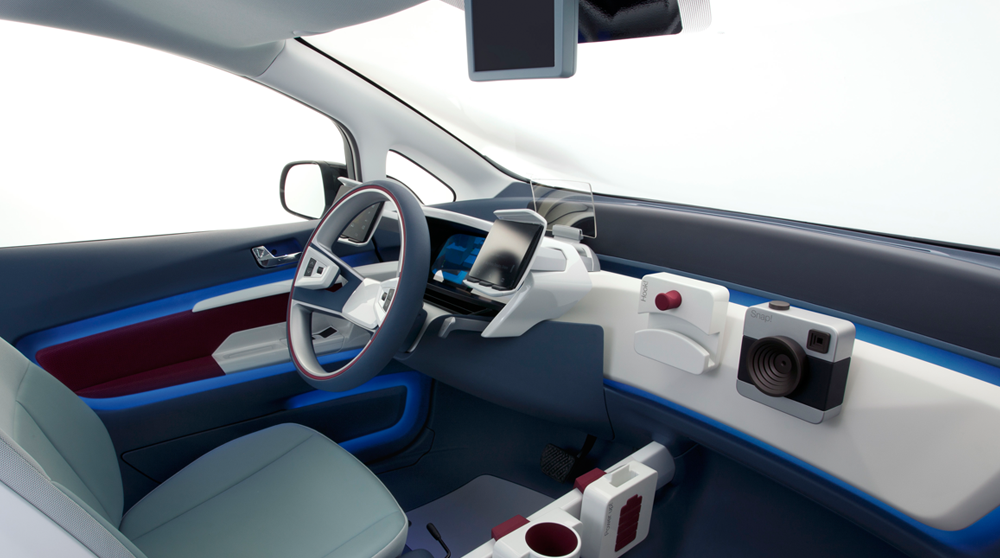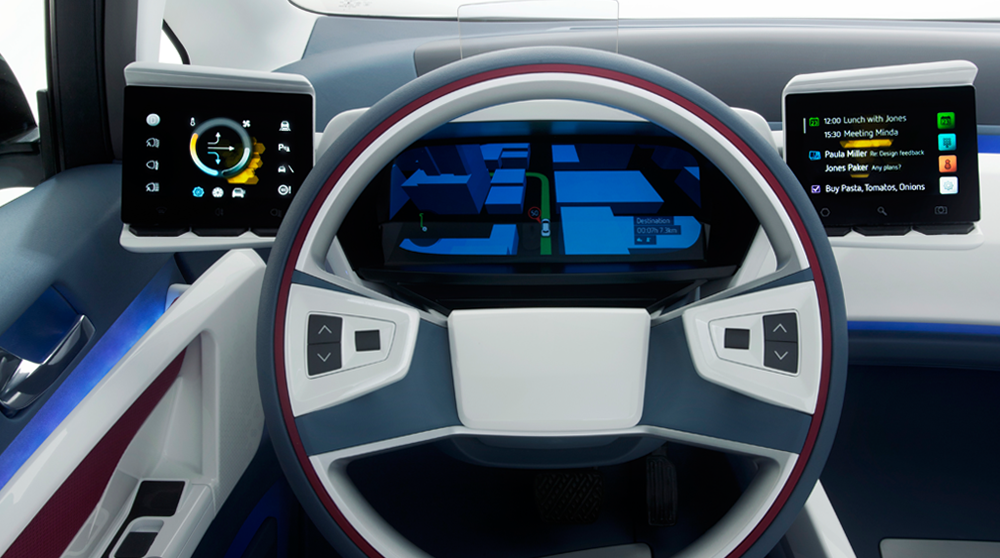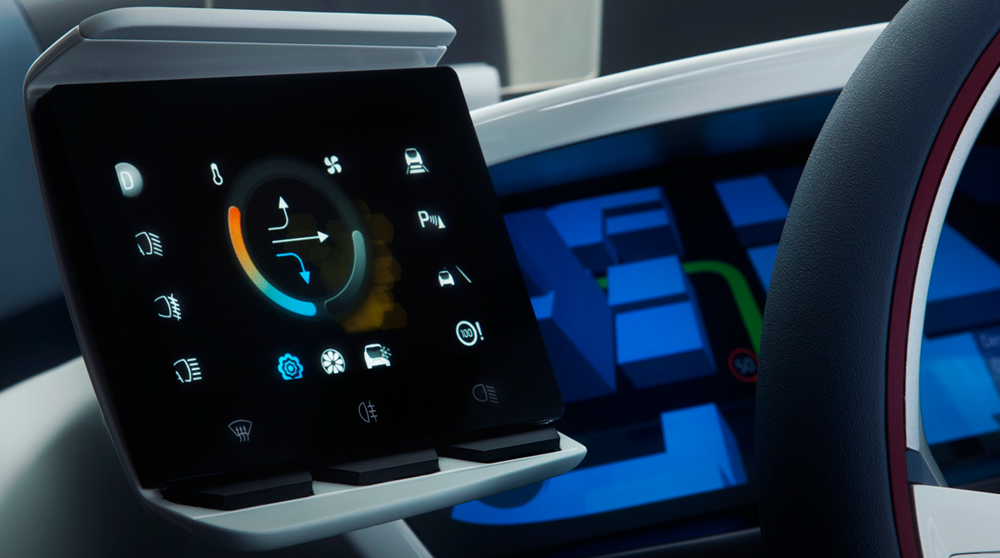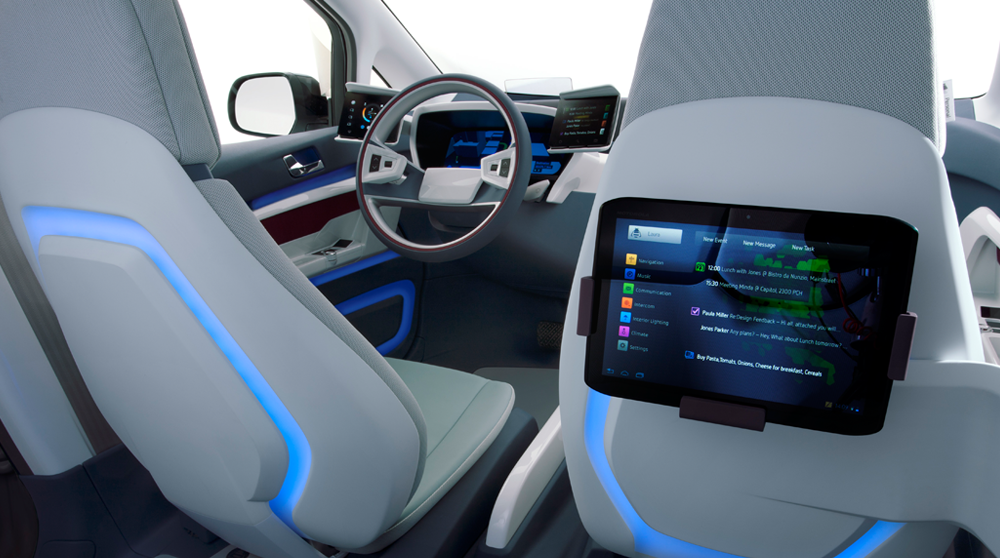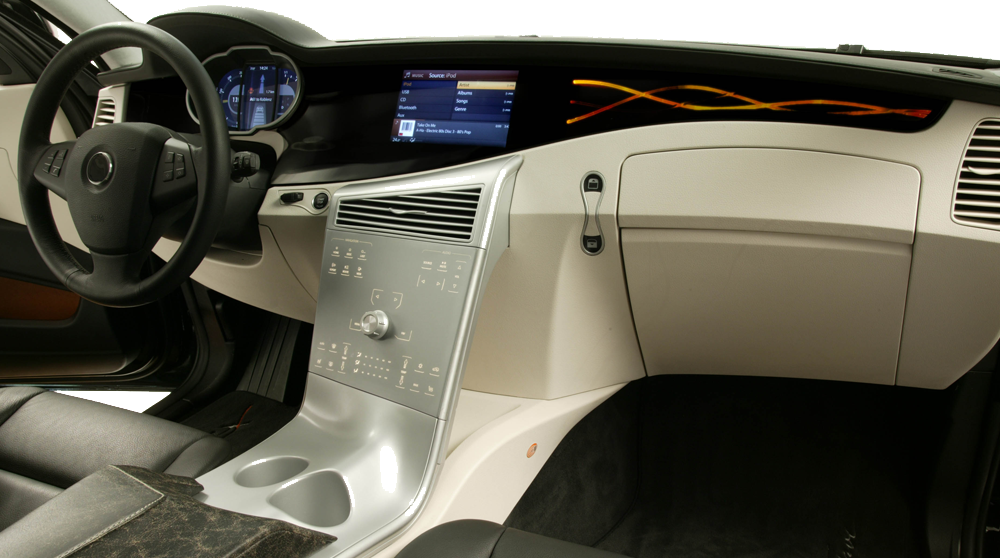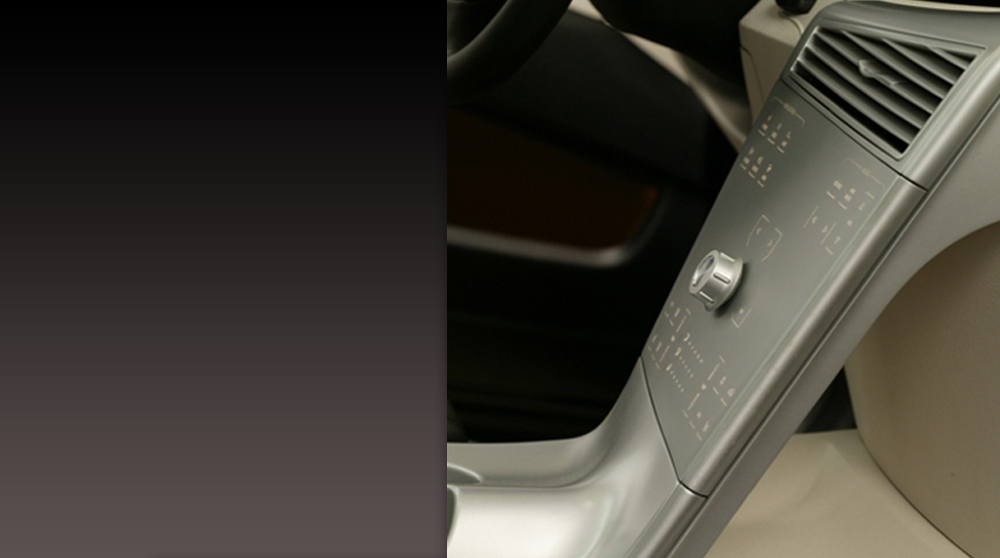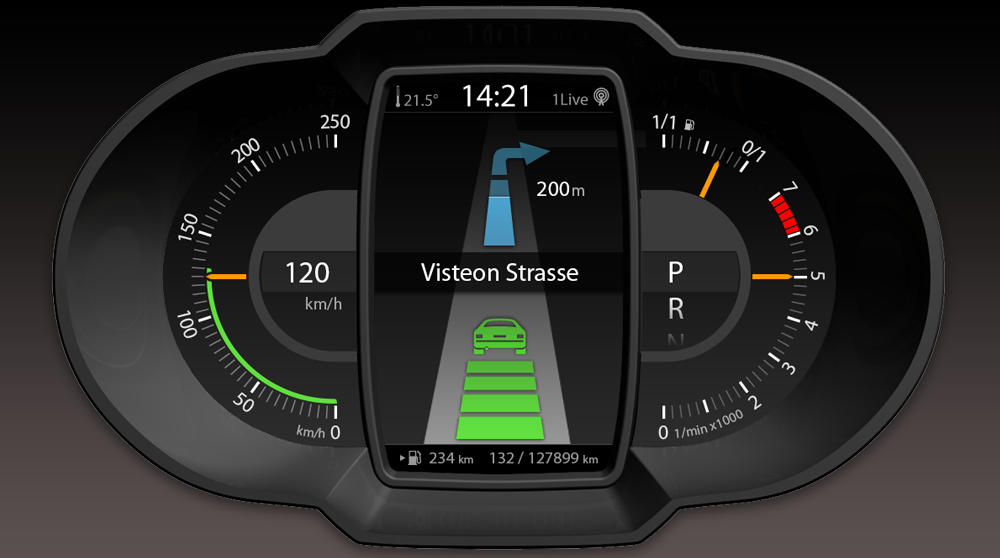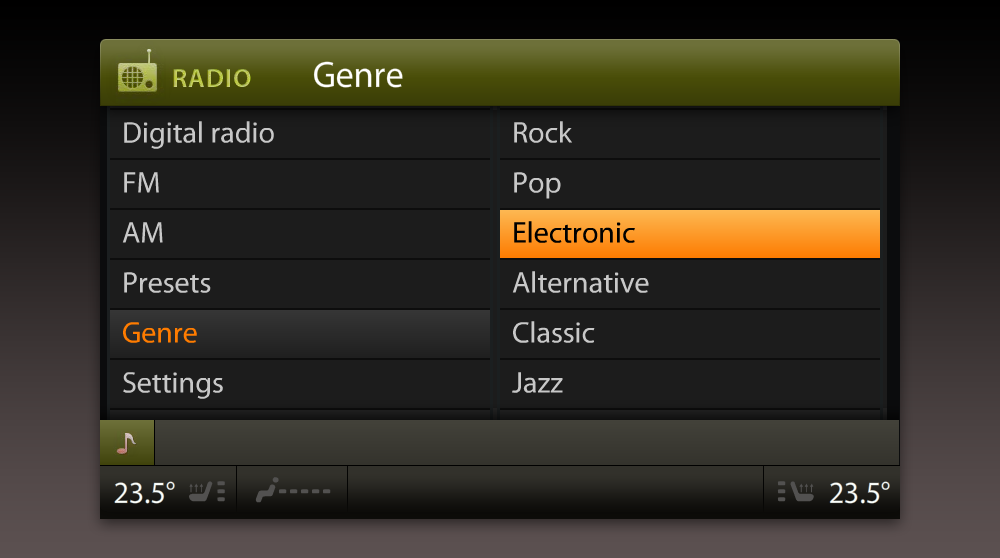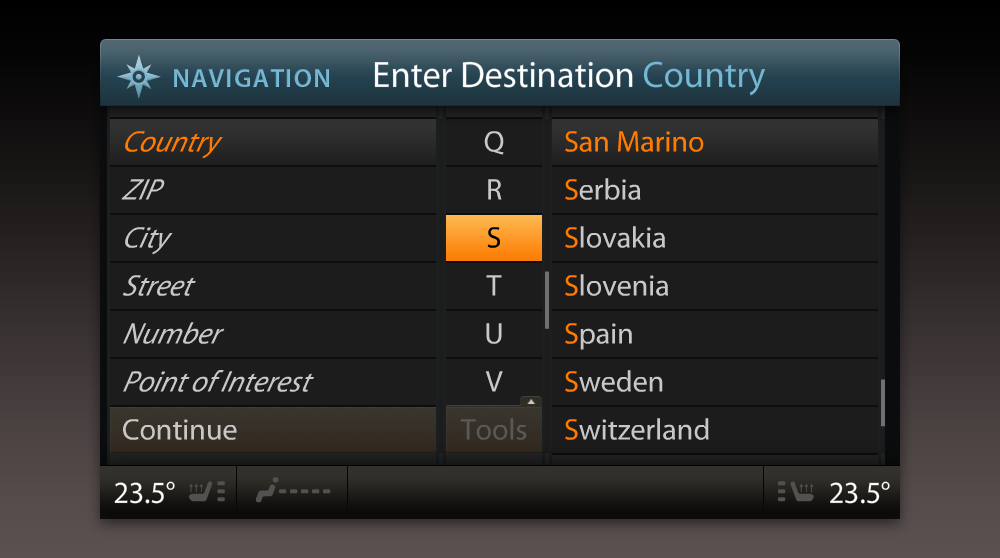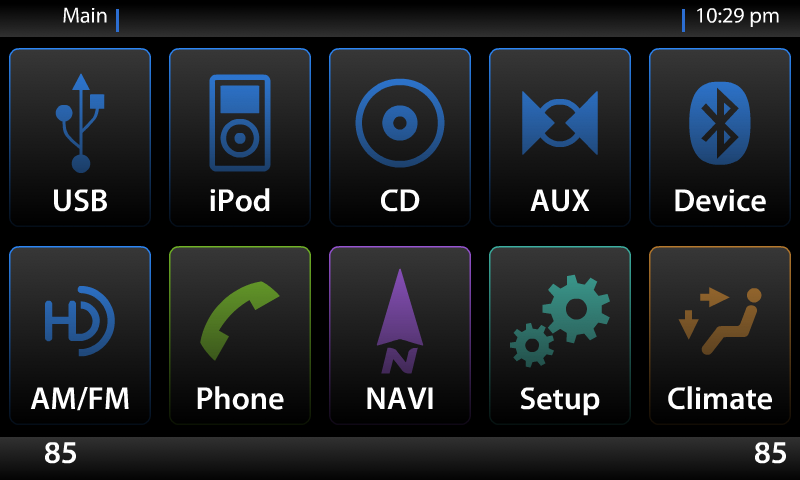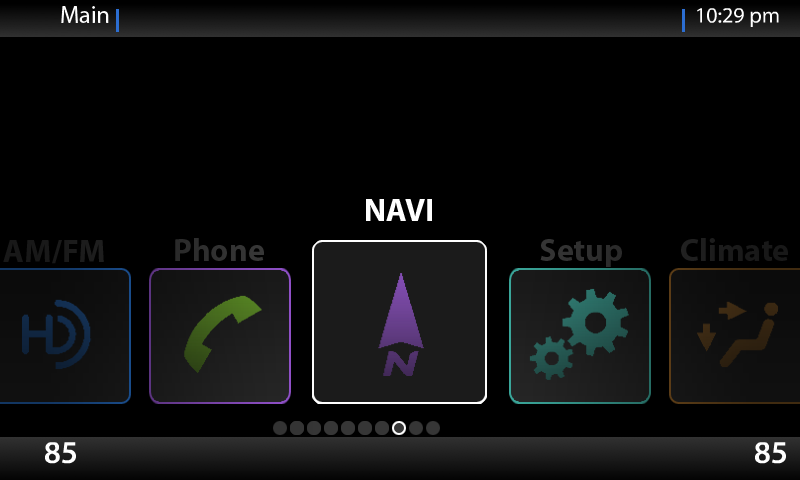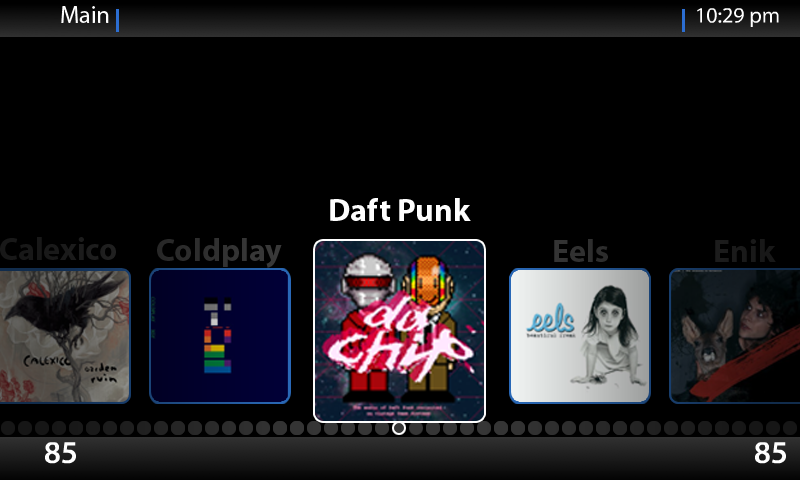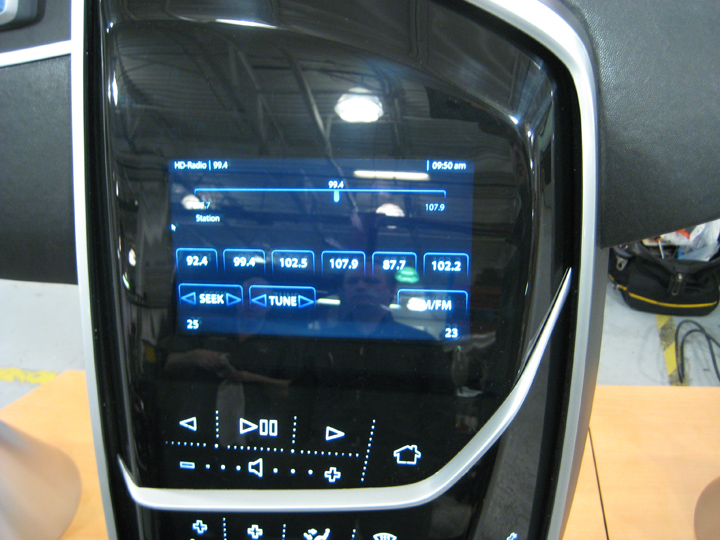The e-Bee is a concept car for 2020 with car sharing options, ride sharing and smart mobility capabilities. The vehicle is based on a regular Nissan Leaf, stripped off to the chassis and rebuilt with Visteon parts.
The goal was to design the car for not only driving from point A to B, but to let the passengers organize their digital social live while in the car and share their car with others.
The complex information of the digital live and the information from the car was divided into three separate displays: one for the driving and car related stuff (left from steering wheel), one multitouch device – on the right hand side – for infotainment and the one in front of the driver (cluster) for routing information.
On the cluster the user can see a 3D-map of the surrounding area – rendered in real time – and augmented with all the social information needed to plan the trip and the live around it.
The system is based on a central server instance from VST (ui.cockpit) which handles all the communication between system components, the car and the driver and the passenger. The whole system can be remotely controlled from an Android tablet.


